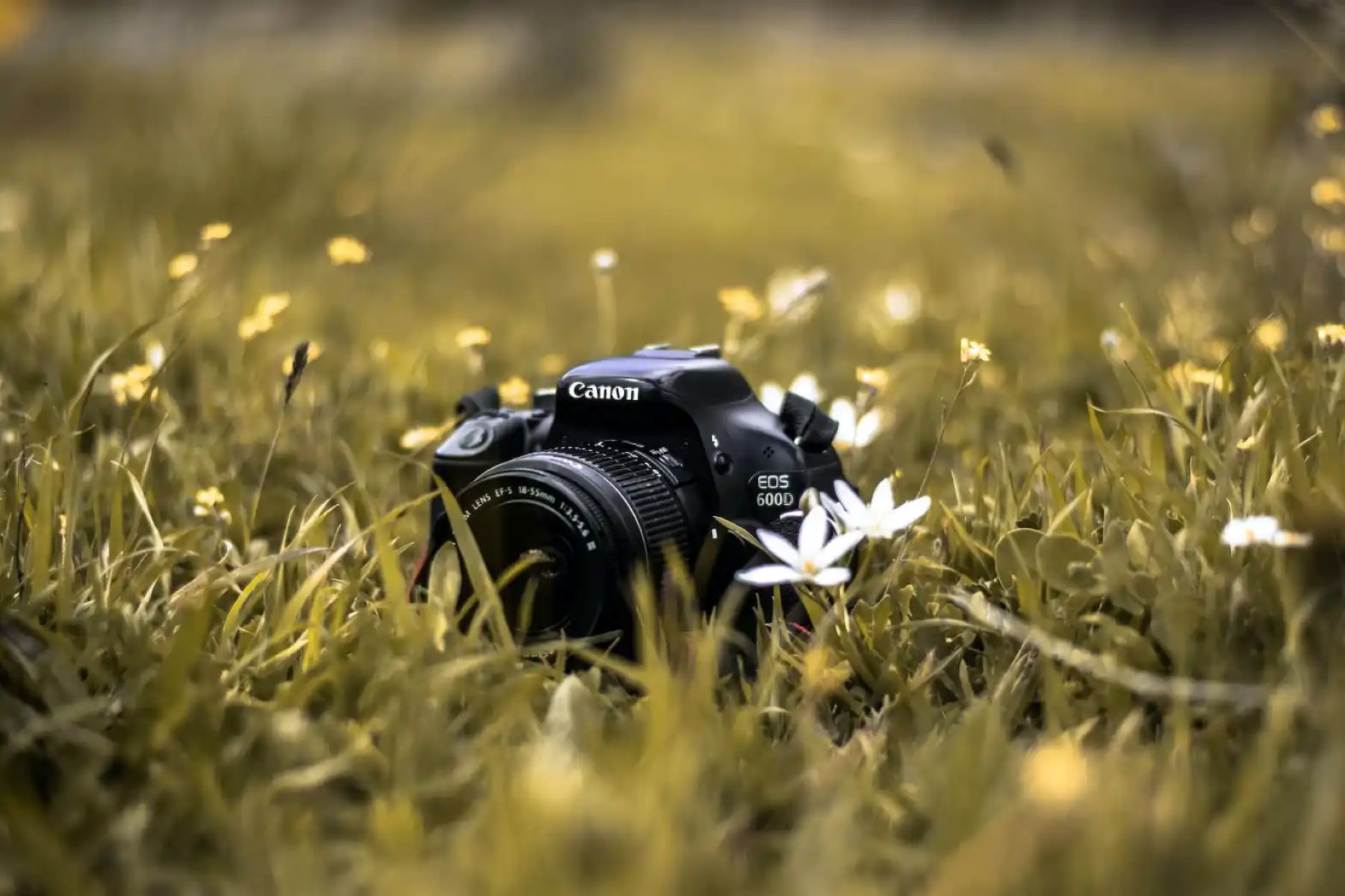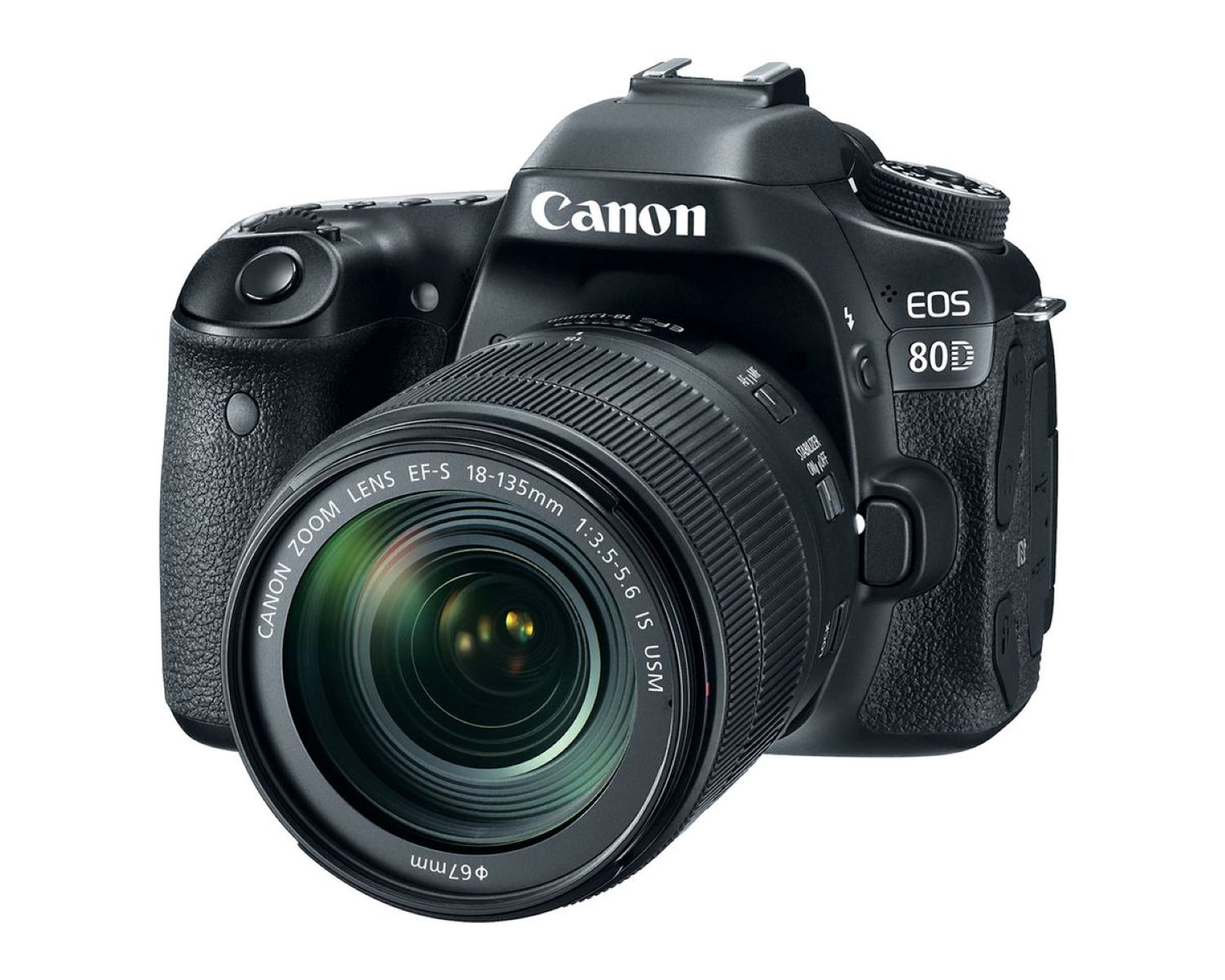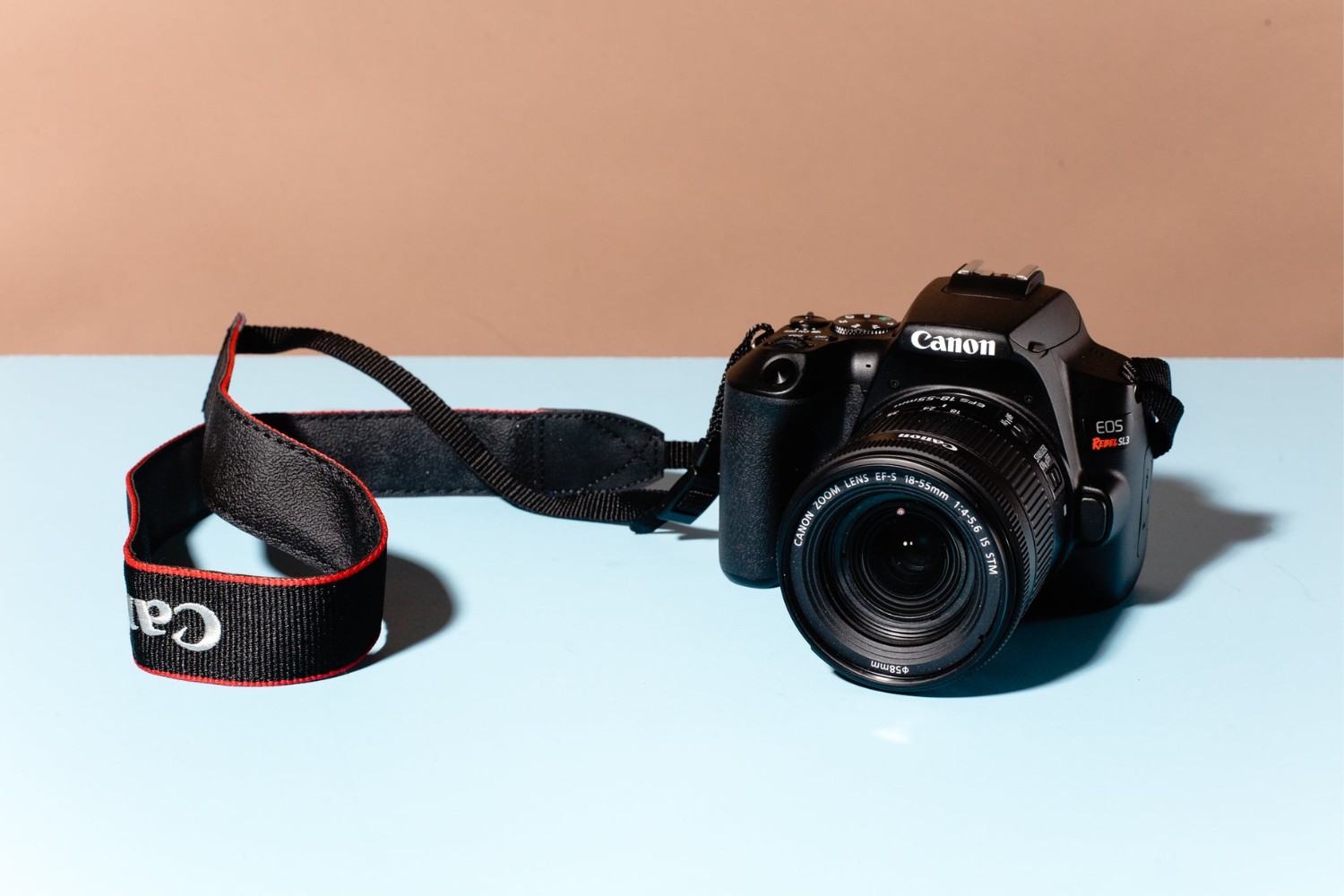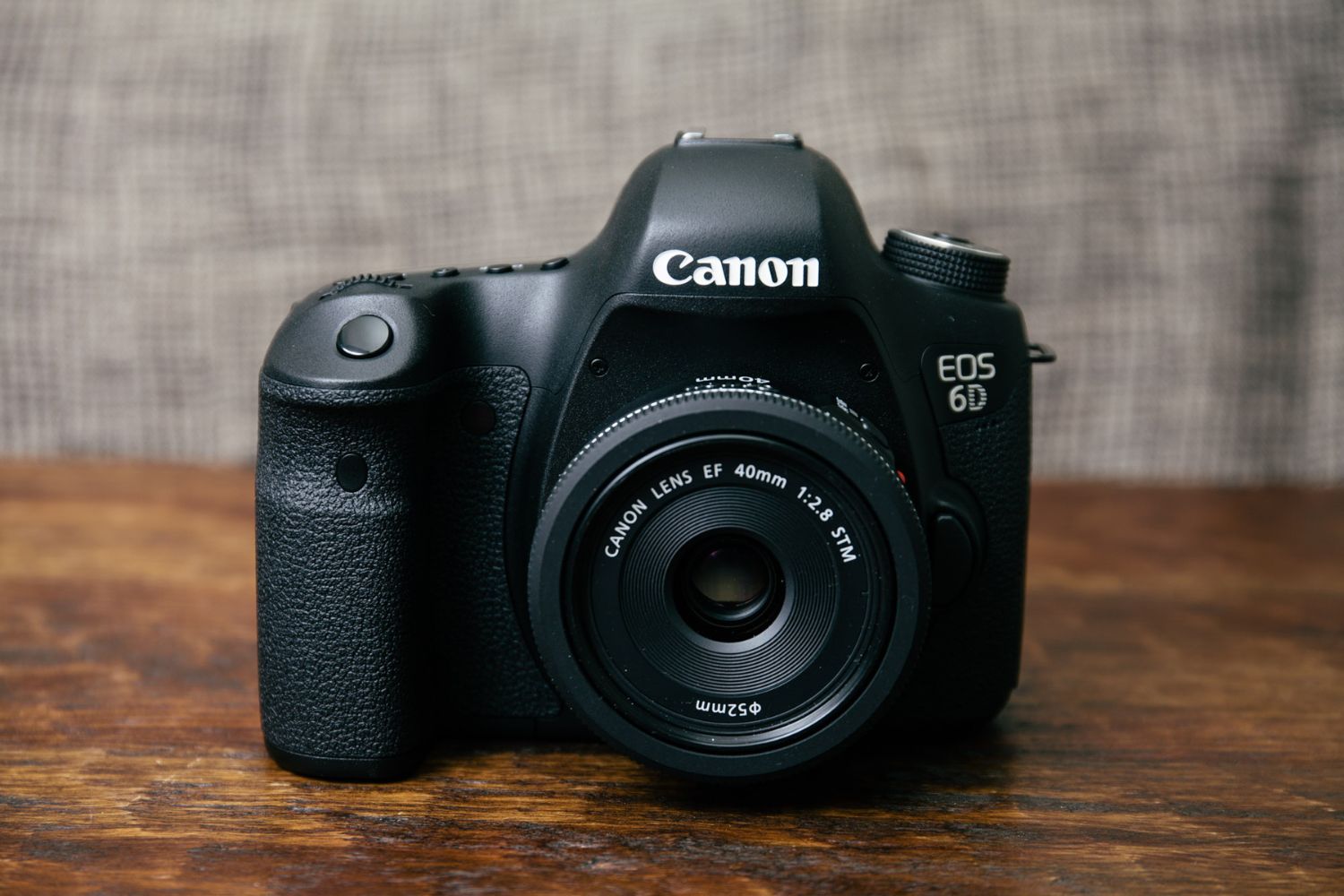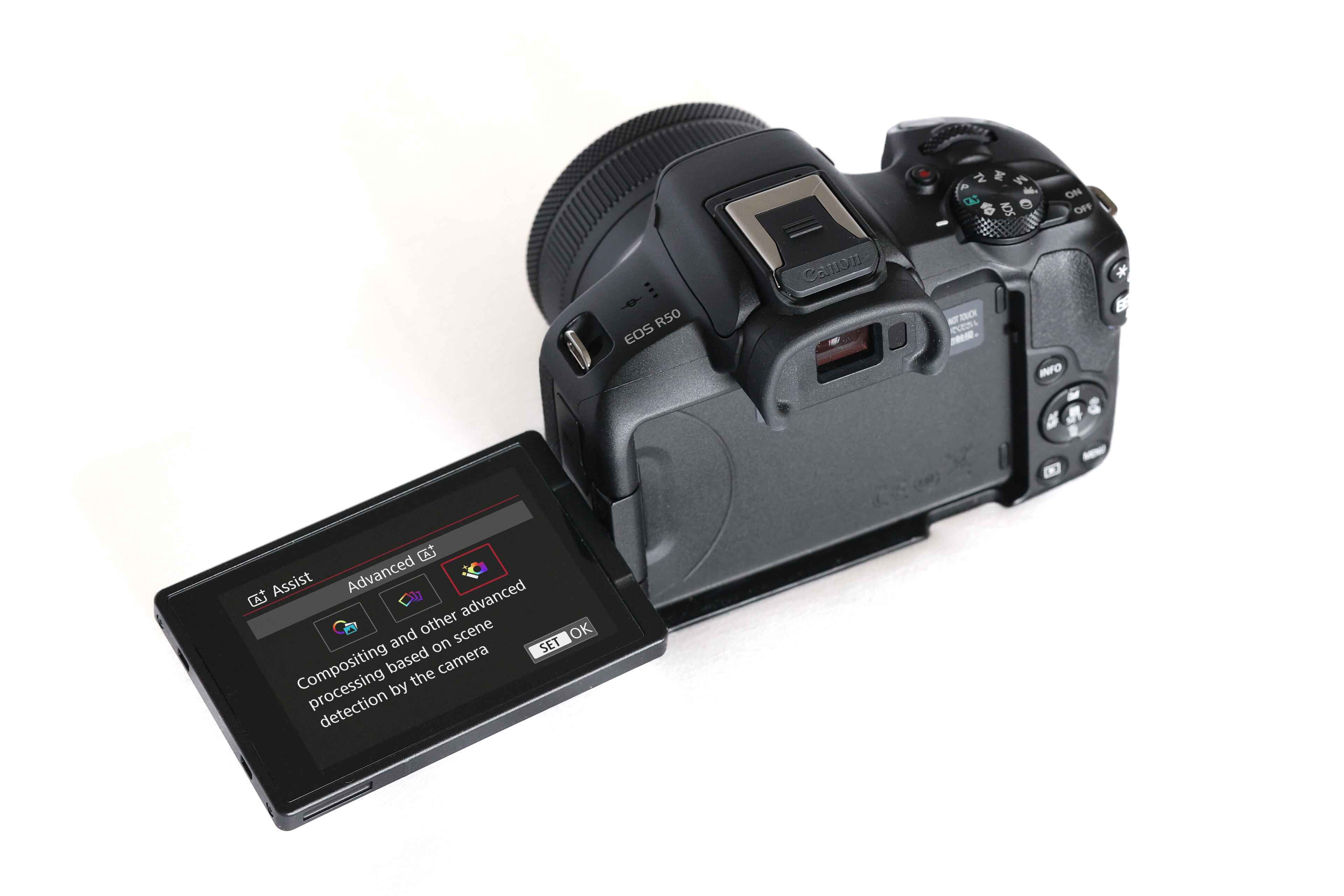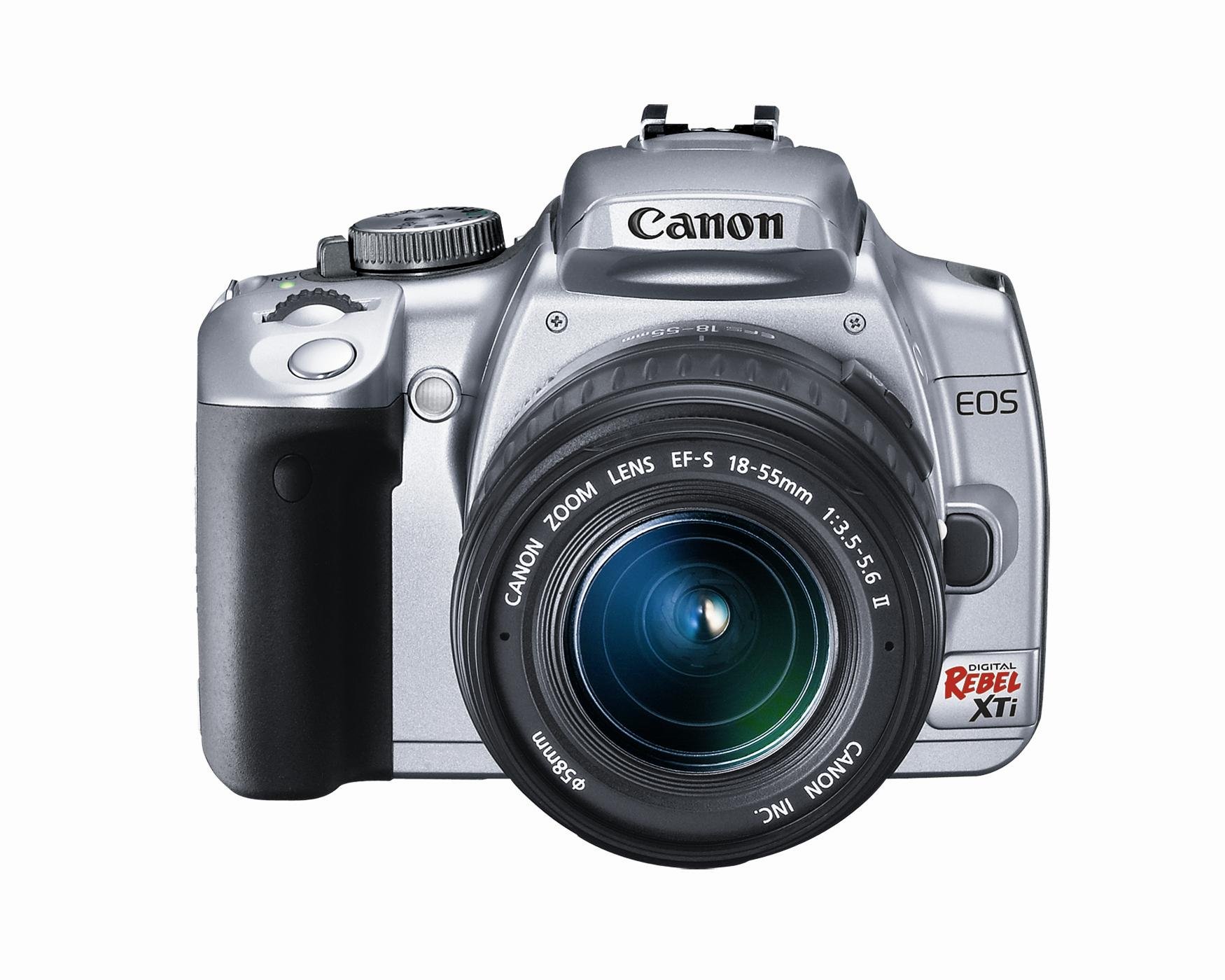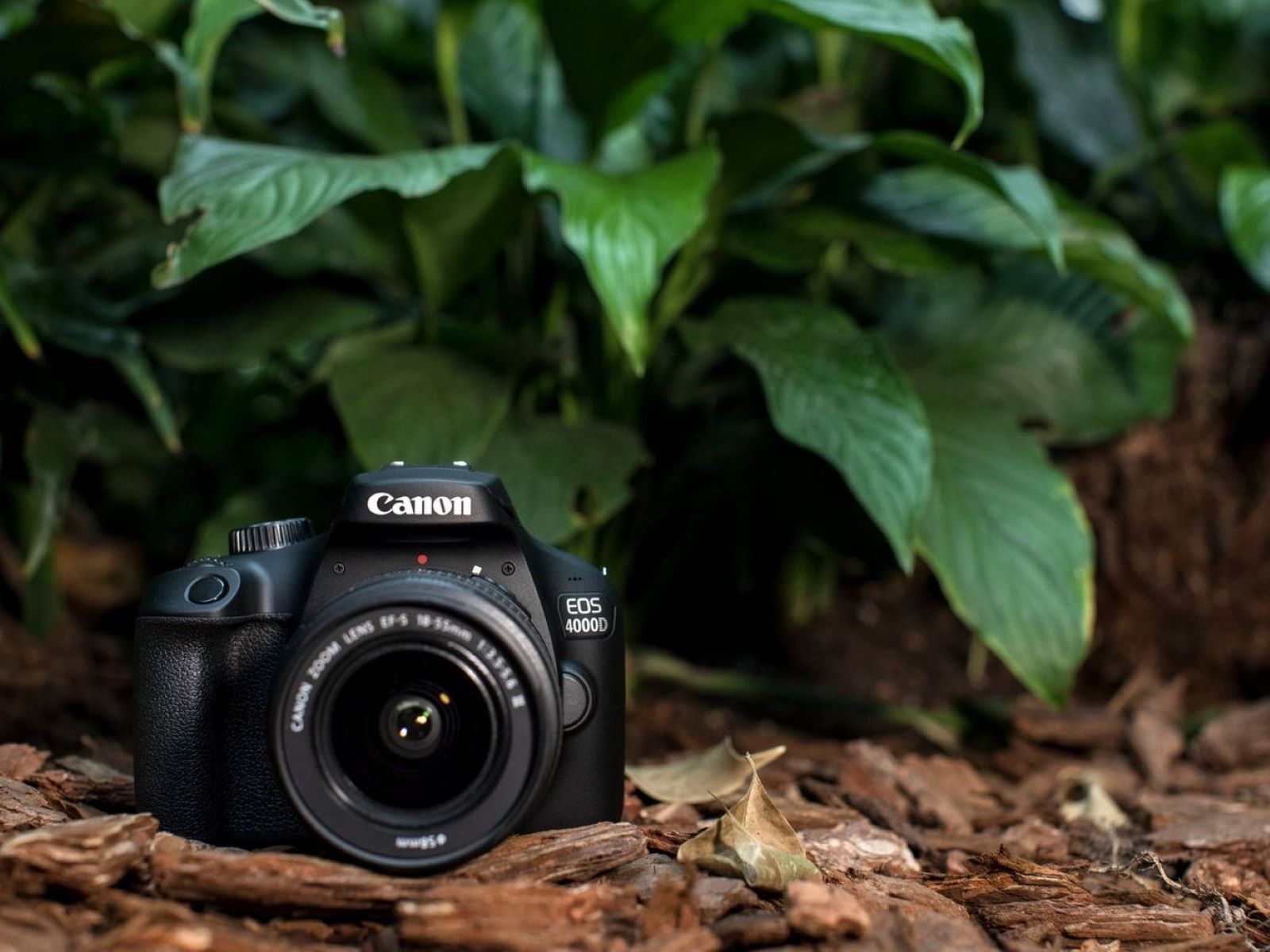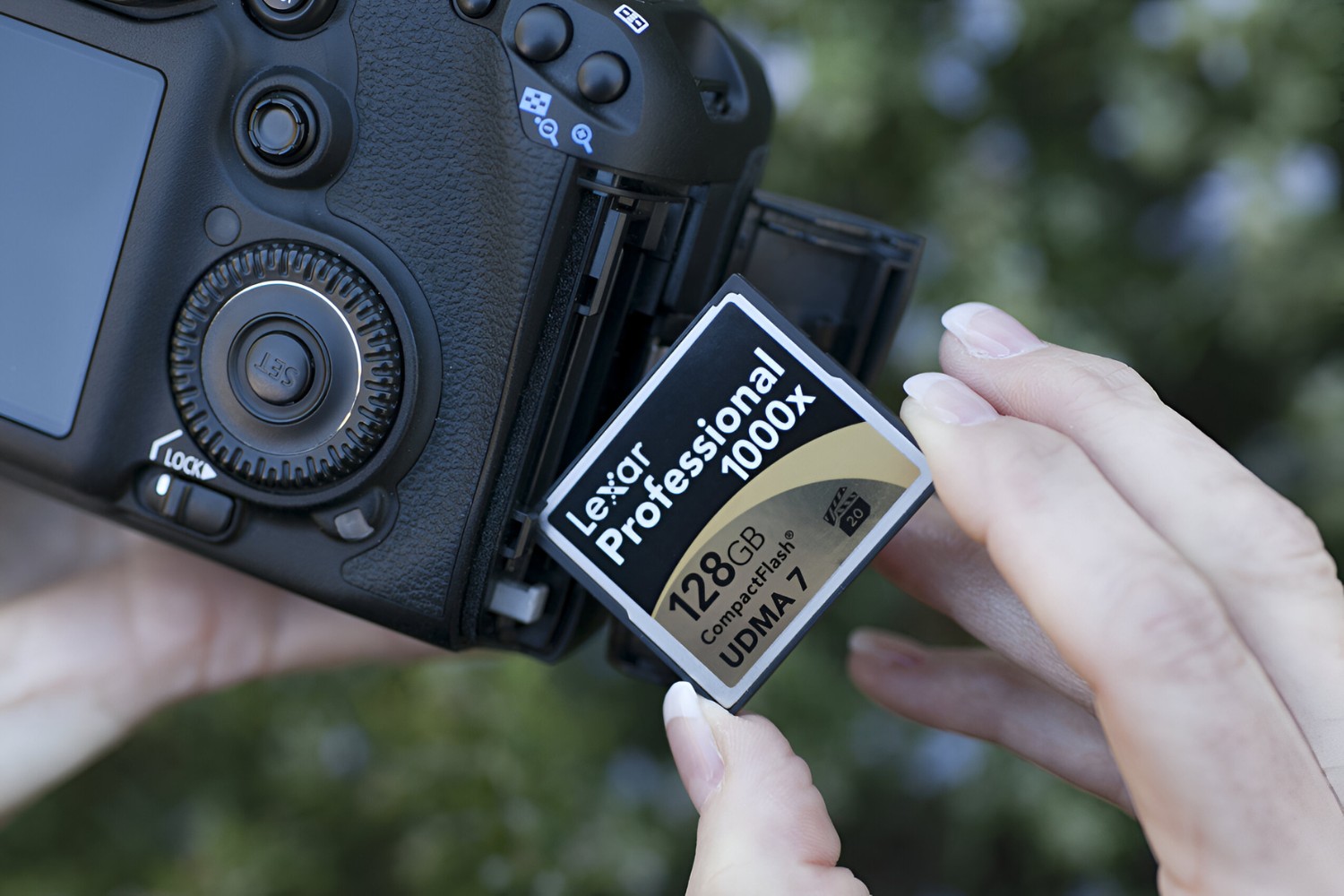Introduction
Welcome to the world of photography with the Canon DSLR camera! Whether you're a beginner or an enthusiast looking to hone your skills, understanding how to make the most of your camera is essential for capturing stunning images. In this guide, we will explore the fundamental aspects of using a Canon DSLR camera, from getting to know the camera itself to mastering manual mode and utilizing different lenses for diverse photographic needs. By the end of this journey, you will have the knowledge and confidence to unleash your creativity and capture breathtaking moments with your Canon DSLR camera.
Photography is a beautiful art form that allows us to freeze moments in time and express our creativity through visual storytelling. With a Canon DSLR camera in hand, the possibilities are endless, and the only limit is your imagination. Whether you're passionate about capturing landscapes, portraits, or action shots, understanding the features and capabilities of your camera is the first step toward achieving your photographic goals.
Throughout this guide, we will delve into the intricacies of camera settings, the importance of mastering manual mode, the versatility of different lenses, and the significance of light, exposure, and composition in photography. Each of these elements plays a crucial role in creating compelling and visually striking images, and by understanding and harnessing their power, you can elevate your photography to new heights.
Photography is not just about pointing and shooting; it's about seeing the world through a different lens and capturing moments that resonate with emotion and meaning. Whether you're an aspiring photographer or a hobbyist looking to enhance your skills, this guide will serve as a valuable resource to help you navigate the exciting and rewarding world of photography with your Canon DSLR camera. So, grab your camera, unleash your creativity, and let's embark on this captivating journey together.
Getting to Know Your Canon DSLR Camera
Before you start capturing breathtaking images, it’s essential to familiarize yourself with the key components and features of your Canon DSLR camera. Understanding the physical layout and functionality of your camera will empower you to operate it with confidence and precision, allowing you to focus on the creative aspects of photography.
First and foremost, take the time to explore the exterior of your Canon DSLR camera. Familiarize yourself with the location of the shutter button, mode dial, and various control buttons, as well as the LCD screen and viewfinder. Understanding the placement of these elements will enable you to navigate the camera’s settings and functions efficiently, ensuring that you never miss a perfect shot.
Next, delve into the menu system of your Canon DSLR camera. The menu is where you can access a plethora of settings and customization options, allowing you to tailor the camera to your specific preferences and shooting requirements. Take the time to navigate through the menu, exploring options related to image quality, white balance, autofocus modes, and other essential parameters that directly impact the outcome of your photographs.
Furthermore, acquaint yourself with the various shooting modes offered by your Canon DSLR camera. These modes, such as aperture priority, shutter priority, and program mode, provide different levels of control over the exposure and settings, catering to diverse shooting scenarios. Understanding when and how to utilize each shooting mode will empower you to adapt to different lighting conditions and subjects, enhancing the versatility of your photography.
Lastly, familiarize yourself with the basic accessories that complement your Canon DSLR camera. From memory cards and camera bags to additional lenses and external flashes, having the right accessories at your disposal can significantly enhance your photographic capabilities and overall shooting experience.
By taking the time to get to know your Canon DSLR camera inside and out, you’ll be better equipped to unleash your creativity and capture stunning images that reflect your unique perspective. Embrace the journey of discovery, experiment with different settings, and let your camera become an extension of your creative vision.
Understanding Camera Settings
Mastering the various settings of your Canon DSLR camera is essential for achieving optimal results in your photography. By understanding and effectively utilizing the camera’s settings, you can take full control of the exposure, focus, and overall image quality, allowing you to capture stunning photographs that truly reflect your creative vision.
One of the fundamental settings to grasp is the aperture, which controls the size of the lens opening and directly influences the depth of field in your images. Understanding how aperture impacts the sharpness of your subject against a blurred background, or vice versa, empowers you to convey depth and emphasis in your photographs, adding a captivating dimension to your visual storytelling.
Additionally, familiarize yourself with the concept of shutter speed and its impact on capturing motion. Adjusting the shutter speed allows you to freeze fast-moving subjects or create a sense of motion in your images, providing you with the creative freedom to convey dynamic and expressive moments through your photography.
Another crucial setting to explore is ISO, which determines the camera’s sensitivity to light. Understanding how to adjust the ISO setting enables you to adapt to different lighting conditions, whether you’re shooting in bright daylight or low-light environments, without compromising the image quality.
Moreover, delve into the intricacies of white balance, a setting that ensures accurate color representation in your photographs under various lighting conditions. By mastering white balance adjustments, you can capture images with true-to-life colors, regardless of whether you’re shooting indoors, outdoors, or in mixed lighting environments.
Furthermore, familiarize yourself with the autofocus modes available on your Canon DSLR camera. Understanding the different autofocus options, such as single-point autofocus, zone autofocus, and continuous autofocus, allows you to precisely control the camera’s focus and track moving subjects with ease, ensuring that your images are sharp and well-defined.
By gaining a comprehensive understanding of these essential camera settings, you’ll be equipped to unleash your creativity and capture visually stunning images that resonate with depth, emotion, and technical precision. Embrace the process of experimentation and discovery, and let your newfound knowledge of camera settings elevate your photography to new heights.
Mastering Manual Mode
While automatic and semi-automatic shooting modes provide convenience in certain situations, mastering manual mode on your Canon DSLR camera offers unparalleled control and creative freedom over your photography. Manual mode empowers you to fine-tune every aspect of the exposure, including aperture, shutter speed, and ISO, allowing you to capture images precisely as you envision them.
When shooting in manual mode, you have complete authority over the aperture setting, enabling you to determine the depth of field in your photographs with precision. Whether you aim to isolate a subject with a shallow depth of field or capture a sweeping landscape with sharp details throughout, manual control over the aperture grants you the creative flexibility to achieve your desired visual impact.
Moreover, manual mode grants you the ability to adjust the shutter speed according to the specific motion and dynamics of your subject. Whether freezing fast action with a quick shutter speed or creating a sense of motion with a deliberate longer exposure, the control offered by manual mode allows you to convey the desired mood and energy in your images.
Understanding and manipulating the ISO setting in manual mode is equally crucial, as it enables you to adapt to varying lighting conditions without compromising image quality. By precisely adjusting the ISO, you can maintain optimal exposure while retaining the desired level of detail and minimizing digital noise in your photographs.
Furthermore, manual mode empowers you to fine-tune the white balance settings to achieve accurate color representation, ensuring that the hues and tones in your images are faithful to the scene’s natural ambiance and lighting conditions.
Embracing manual mode on your Canon DSLR camera is an invitation to elevate your photography to a new level of artistry and technical proficiency. It grants you the freedom to experiment, innovate, and express your unique vision with unparalleled precision and control. As you familiarize yourself with manual mode, you’ll discover a newfound appreciation for the craft of photography and the limitless creative possibilities it offers.
Using Different Lenses
One of the most compelling aspects of photography with a Canon DSLR camera is the ability to explore diverse perspectives and visual styles through the use of different lenses. Each lens offers unique characteristics and capabilities, allowing you to adapt to varying shooting scenarios and unleash your creativity in new and exciting ways.
One of the most versatile lenses in a photographer’s arsenal is the standard zoom lens, which provides a flexible focal range suitable for a wide variety of subjects and compositions. From capturing sweeping landscapes to framing intimate portraits, the standard zoom lens offers convenience and adaptability, making it an excellent choice for everyday photography.
For photographers seeking to isolate their subjects with striking visual impact, a prime lens with a wide aperture is an indispensable tool. The wide aperture not only enables beautiful background blur, or “bokeh,” but also allows for superior performance in low-light conditions, making it ideal for portrait, street, and indoor photography.
Furthermore, telephoto lenses extend the reach of your Canon DSLR camera, allowing you to capture distant subjects with exceptional clarity and detail. Whether photographing wildlife, sports, or architectural details, the telephoto lens enables you to bring distant scenes closer, creating compelling compositions with a unique sense of intimacy and perspective.
On the other hand, macro lenses open up a captivating world of close-up photography, enabling you to capture intricate details and textures with stunning precision. From delicate flowers to intricate textures, the macro lens allows you to explore the beauty of the small-scale world, revealing mesmerizing details that might otherwise go unnoticed.
Wide-angle lenses offer a dramatic perspective, making them ideal for capturing expansive landscapes, architectural marvels, and immersive interior spaces. The wide field of view and unique distortion characteristics of wide-angle lenses provide a dynamic visual impact, inviting viewers to immerse themselves in the expansive scenes you capture.
By understanding the unique characteristics and applications of different lenses, you can expand your creative horizons and infuse your photography with fresh perspectives and expressive depth. Embrace the versatility of your Canon DSLR camera by exploring the myriad possibilities offered by different lenses, and let each lens become a gateway to new realms of visual storytelling and artistic exploration.
Understanding Light and Exposure
Light is the essence of photography, and mastering its interaction with your Canon DSLR camera is fundamental to creating compelling and visually striking images. Understanding the principles of light and exposure empowers you to harness its transformative power, infusing your photographs with depth, mood, and captivating visual narratives.
One of the fundamental concepts to grasp is the relationship between light and shadow. By observing how light interacts with your subjects, you can create compelling contrasts and sculptural dimensionality in your images, adding a sense of drama and visual intrigue. Whether capturing the soft, diffused light of a cloudy day or the bold, directional light of a sunny afternoon, each lighting scenario presents an opportunity to craft evocative and dynamic compositions.
Moreover, understanding exposure is pivotal to achieving optimal image quality. The exposure triangle, comprising aperture, shutter speed, and ISO, forms the cornerstone of controlling the amount of light that reaches the camera’s sensor. Balancing these elements enables you to achieve the desired brightness, sharpness, and clarity in your photographs, ensuring that your images faithfully convey the scene’s visual richness and tonal range.
Embracing the nuances of exposure empowers you to adapt to diverse lighting conditions, whether capturing the golden hues of a sunset, the vibrant colors of a bustling cityscape, or the subtle tonal gradations of a monochromatic scene. By mastering exposure, you can preserve the delicate balance between highlights and shadows, resulting in images that exude visual harmony and technical finesse.
Furthermore, understanding the quality of light is essential for shaping the mood and atmosphere of your photographs. Whether exploring the warm, golden light of the “golden hour” or the ethereal glow of soft, diffused light, recognizing and harnessing the nuances of light quality enables you to imbue your images with emotive resonance and captivating visual allure.
By immersing yourself in the art of understanding light and exposure, you’ll elevate your photography to new heights, infusing your images with a captivating interplay of luminosity and shadow, technical precision, and evocative storytelling. Embrace the transformative power of light, and let it become a guiding force in shaping your photographic vision and creative expression.
Composition and Framing
Composition and framing are the cornerstones of creating visually compelling and impactful photographs with your Canon DSLR camera. By understanding and applying the principles of composition, you can transform ordinary scenes into extraordinary visual narratives, captivating viewers and conveying your unique perspective with depth and resonance.
One of the fundamental principles of composition is the rule of thirds, a guideline that divides the frame into a grid of nine equal sections, intersecting at key points. Placing the main elements of your composition along these intersecting points or along the gridlines can create a sense of balance, harmony, and visual interest, drawing the viewer’s eye into the scene and establishing a dynamic and engaging visual flow.
Framing your subjects within the composition is equally crucial, as it allows you to control the viewer’s focus and emphasize the main elements of the scene. Whether using natural elements such as archways, windows, or foliage to frame your subject, or leveraging leading lines to guide the viewer’s gaze, thoughtful framing adds depth and context to your photographs, inviting viewers to immerse themselves in the visual narrative.
Understanding the concept of negative space – the empty areas surrounding the main subject – is also pivotal in creating impactful compositions. By strategically incorporating negative space, you can enhance the visual impact of your subject, evoke a sense of tranquility or isolation, and imbue your images with a compelling sense of minimalism and emotional resonance.
Furthermore, exploring the concept of perspective and depth in your compositions adds a dynamic and immersive quality to your photographs. Whether capturing expansive landscapes or intimate portraits, utilizing leading lines, foreground elements, and varying points of view allows you to create a sense of depth and dimension, drawing the viewer into the scene and evoking a powerful sense of visual storytelling.
By mastering the art of composition and framing, you’ll infuse your photographs with a captivating sense of visual harmony, narrative depth, and emotional resonance. Embrace the principles of composition as a powerful tool for expressing your creative vision, and let each frame become a canvas for evocative storytelling and immersive visual exploration.
Tips for Better Photography
Embarking on a journey to improve your photography with a Canon DSLR camera involves not only technical mastery but also a keen eye for creativity and storytelling. Here are some valuable tips to enhance your photographic skills and elevate the impact of your images:
- Embrace the Golden Hour: Take advantage of the soft, warm light during the golden hour, shortly after sunrise or before sunset, to capture scenes with a captivating, ethereal glow and gentle, flattering shadows.
- Experiment with Composition: Explore unconventional angles, leading lines, and the rule of thirds to create visually dynamic and engaging compositions that draw the viewer into the scene.
- Seek Unique Perspectives: Challenge yourself to discover new viewpoints and perspectives, whether by getting low to the ground, finding elevated vantage points, or exploring unexpected angles that offer fresh and compelling visual narratives.
- Capture Authentic Moments: Whether photographing people, events, or everyday scenes, strive to capture genuine emotions and candid moments that convey authenticity and storytelling depth.
- Master the Art of Patience: Great photographs often require patience and timing. Take the time to observe the scene, anticipate the decisive moment, and be ready to capture it with precision and finesse.
- Utilize Negative Space: Embrace the power of negative space to create breathing room around your subjects, evoke a sense of tranquility, and draw attention to the essential elements of your composition.
- Pay Attention to Details: Whether capturing intricate textures, subtle expressions, or delicate nuances, train your eye to notice and celebrate the small details that add depth and richness to your photographs.
- Experiment with Post-Processing: While capturing striking images in-camera is essential, post-processing can further enhance your photographs. Experiment with editing tools to refine exposure, contrast, and color to achieve your desired visual impact.
- Continuously Learn and Grow: Photography is a journey of continual learning and growth. Seek inspiration from other photographers, explore new techniques, and never shy away from experimentation and creative exploration.
By incorporating these tips into your photographic practice, you’ll not only refine your technical skills but also develop a keen artistic sensibility that infuses your images with depth, emotion, and visual resonance. Embrace each opportunity to create and capture moments that reflect your unique perspective, and let your Canon DSLR camera be the conduit for your creative vision and storytelling prowess.
Conclusion
Congratulations on embarking on this enriching journey to master the art and craft of photography with your Canon DSLR camera. Throughout this guide, we’ve explored the fundamental aspects of using your camera, from understanding its settings and mastering manual mode to harnessing light, composition, and diverse lenses to elevate your photographic vision.
As you continue to hone your skills and explore the boundless possibilities of photography, remember that each photograph is an opportunity to express your unique perspective and tell a compelling visual story. Embrace the technical aspects of photography while nurturing your creative intuition, and let your Canon DSLR camera become a powerful tool for capturing moments that resonate with depth, emotion, and captivating visual allure.
Photography is a journey of continual discovery and growth, and each click of the shutter presents an opportunity to refine your craft, expand your artistic horizons, and connect with the world in a profound and visually expressive manner. Whether you’re capturing the grandeur of nature, the intimacy of human connections, or the vibrancy of everyday moments, your Canon DSLR camera is a gateway to transforming fleeting instants into timeless works of art.
Remember that there are no limits to your creativity, and every photograph is a canvas for your artistic expression. Embrace the process of learning, experimenting, and refining your skills, and let the joy of photography be your guiding light as you continue to capture the beauty, emotion, and stories that unfold before your lens.
So, go forth with your Canon DSLR camera in hand, immerse yourself in the art of photography, and let each click of the shutter be a testament to your unique perspective, creative vision, and unwavering passion for the art of visual storytelling. Your journey as a photographer is an ever-evolving narrative, and your Canon DSLR camera is the faithful companion that will accompany you through every captivating moment and inspiring image you create.







